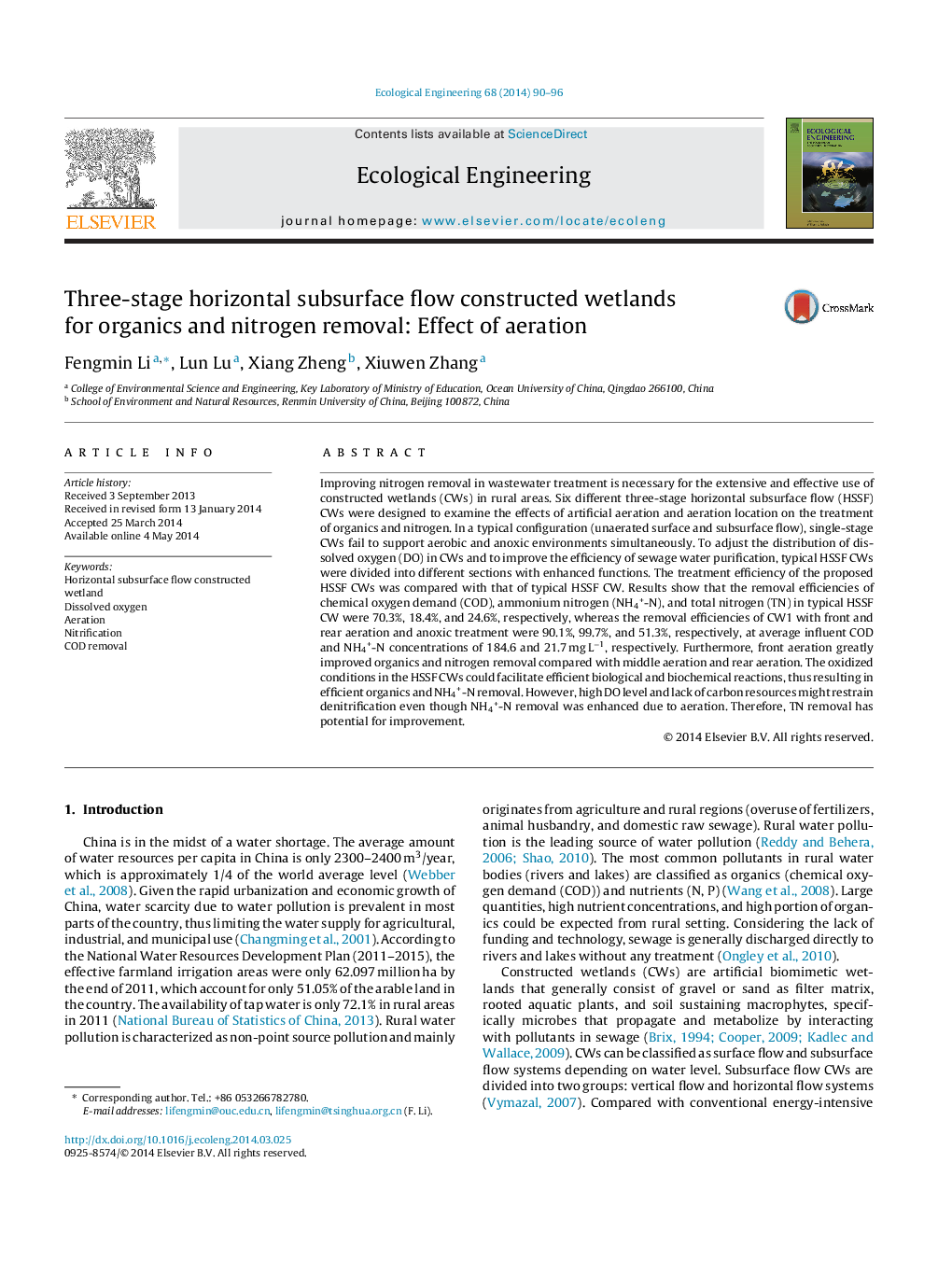| Article ID | Journal | Published Year | Pages | File Type |
|---|---|---|---|---|
| 6302289 | Ecological Engineering | 2014 | 7 Pages |
â¢Six different three-stage horizontal subsurface flow (HSSF) constructed wetlands were constructed and investigated.â¢Effects of various aeration strategies on the treatment efficiency were studied.â¢High removal efficiencies of COD (90.1%), NH4+-N (99.7%) were achieved simultaneously in HSSF CW with front and rear aeration and anoxic treatment.
Improving nitrogen removal in wastewater treatment is necessary for the extensive and effective use of constructed wetlands (CWs) in rural areas. Six different three-stage horizontal subsurface flow (HSSF) CWs were designed to examine the effects of artificial aeration and aeration location on the treatment of organics and nitrogen. In a typical configuration (unaerated surface and subsurface flow), single-stage CWs fail to support aerobic and anoxic environments simultaneously. To adjust the distribution of dissolved oxygen (DO) in CWs and to improve the efficiency of sewage water purification, typical HSSF CWs were divided into different sections with enhanced functions. The treatment efficiency of the proposed HSSF CWs was compared with that of typical HSSF CW. Results show that the removal efficiencies of chemical oxygen demand (COD), ammonium nitrogen (NH4+-N), and total nitrogen (TN) in typical HSSF CW were 70.3%, 18.4%, and 24.6%, respectively, whereas the removal efficiencies of CW1 with front and rear aeration and anoxic treatment were 90.1%, 99.7%, and 51.3%, respectively, at average influent COD and NH4+-N concentrations of 184.6 and 21.7 mg Lâ1, respectively. Furthermore, front aeration greatly improved organics and nitrogen removal compared with middle aeration and rear aeration. The oxidized conditions in the HSSF CWs could facilitate efficient biological and biochemical reactions, thus resulting in efficient organics and NH4+-N removal. However, high DO level and lack of carbon resources might restrain denitrification even though NH4+-N removal was enhanced due to aeration. Therefore, TN removal has potential for improvement.
